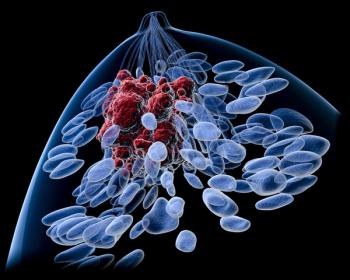
New Peritoneal Surface Malignancy Guidelines Aim to Improve Unity Among Oncologists
The new guidelines relied on trainees to bring new energy and ideas to advance the landscape of care for peritoneal surface malignancies.
In June 2025, new guidelines for the proper care of peritoneal surface malignancies were copublished in both Cancer and Annals of Surgical Oncology.1 Kiran Turaga, MD, MPH, professor of surgical oncology, assistant medical director of the Clinical Trials Office, and division chief of surgical oncology and surgery at Yale Cancer Center and the research lead of the team that put together these guidelines, spoke with CancerNetwork® about the new consensus.
As Turaga noted, approximately 70,000 patients in the US are expected to develop peritoneal metastases, which is precisely why it is crucial to advance and unify oncologists behind a set of clinically outlined, updated guidelines to ensure patients get the best care available.2
CancerNetwork: Why was an update in guidelines for peritoneal surface malignancy care necessary?
Peritoneal metastases are a common site of metastases for a lot of [gastrointestinal] cancers and [gynecologic] cancers, and there are some primary peritoneal malignancies like mesothelioma. There are about 70,000 to 80,000 patients in the US who are affected by this. The challenge with peritoneal metastases is that they’re difficult to image on scans. What ends up happening is that, many times, patients are excluded from clinical trials. We found that for colon cancer peritoneal metastases, of the studies that have looked at 50,000 patients, barely anyone [with peritoneal metastases was enrolled in] clinical trials.
For surgeons, we often get imaging scans and CT scans and don’t see peritoneal metastases. The patients are feeling great, they come for their oncology visits, they feel like they’re doing okay, and then suddenly they’re there with bowel obstructions and are going to hospice or are dying. There’s a critical need for addressing how to manage patients with peritoneal metastases that are distinct. Why? Because, No. 1, they’re not in clinical trials. No. 2, by the time surgeons and other specialists are getting to these patients, often the disease is quite advanced. Therefore, we proposed these guidelines, thinking about how we address this unmet need and this critical gap in the management of these patients.
These guidelines are a set of documents—about 7 papers looking at different pathways—which are jointly published in both Cancer and the Annals of Surgical Oncology.
What are the differences between these new guidelines and the old ones?
The 2018 Chicago consensus was our first effort at trying to bring people together to reduce the nihilism, the variation in care, and to try to be more patient centric in the way we think about it. We were fortunate that it gained some traction. It helped with training, but it didn’t change a lot of the other national guidelines, such as the NCCN guidelines. Several guidelines did not change, therefore reducing their impact and reducing their adoptability. This time around, the guidelines included a larger group of researchers, including everyone who’s interested in peritoneal surface disease. [We] invited clinicians who are experts in these areas through NCCN panels, people who are at national guidelines, pathologists, surgical oncologists, and medical oncologists, but the key difference was that we also had patient representatives. Every disease site had a patient group that represented their perspective and stakeholders. We had international stakeholders, people from different parts of the world.
We also had endorsement from the Society of Surgical Oncology, which is the premier surgical oncology association. The methodological rigor, this time, was very different. Last time, it was like getting together and coming up with these guidelines. This time, it was a very rigorous Delphian process. We did rapid reviews, almost like systematic reviews, for each of the diseases. There are a lot of updates on the data that were done for all of this. We created a course based on all the stuff that was studied. It was methodologically rigorous, it included patients, and it has alignment with major national organizations, and that’s how these [guidelines] are different from last time.
How do these recommendations aim to standardize care and improve outcomes?
The awareness is something that we’re working hard on improving and trying to dispel a lot of the nihilism that exists in oncologists…and thinking about how there’s curative-intent surgery—curative-intent therapies—for these patients. That’s the first thing that we’re hoping these guidelines will accomplish for us, by trying to create a common terminology. A classic example is appendiceal tumors, where appendiceal pathology, especially mucinous epithelial tumors, has been labeled very differently; there is the Ronnett classification, the WHO [World Health Organization] classification, the PSOGI [Peritoneal Surface Oncology Group International] classification, and the new WHO classification. This has led to complete chaos when you think about appendiceal tumors. Some patients are [diagnosed with] stage IV cancer and are told they’re going to live 3 or 6 months, when indeed they’re going to live 20 years, and vice versa. The harmonization of a lot of this pathology was done in these guideline documents, bringing everyone together. [We're] using the same terminology and specifically advocating for therapies that have curative intent but also thinking about clinical trials and using modern therapies in the treatment of these patients and aligning these with guidelines that are already carefully thought out, like the NCCN guidelines. Trying to bring all these different, disparate stakeholders together and coming up with one guideline is really what is special about this.
How does this consensus affect the training of oncologists?
Using a common terminology, using the same language, and talking in the same way about patients is perhaps the most important thing we can do for trainees. The richness of these papers is that they show areas where there is discordance, people disagree, or there’s controversy, but they also show areas where there’s significant alignment and consensus around how patients should be managed. That’s the most important thing we can do for our trainees, where they have very clear, precise pathways but also an awareness of the limitations of these pathways. That’s what this does.
The key thing in this consensus, which was unique, was that this effort was led by our trainees. The trainees were the glue that would then work with a lot of the experts in the field, bring this together, and write the manuscript. You’ll notice that the papers are all written by our trainee authors who are expanded out, but the actual group is the consortium group, which is the last author. They’re the experts who have done all the work, so when the trainees have written these papers, they’ve written them from their perspective as well. It is something where this is written by the trainees, for the trainees, and, of course, for all the other clinicians who take care of patients. We also had a parallel effort where we built a curriculum, and we did a needs assessment. We saw what trainees need from this curriculum, like how much time they were willing to spend, what they need to learn, and how they should learn it. There are bite-sized pieces of information that are accessible on their phones. Digital media is something that we were able to develop in parallel with this as well.
What are some of the challenges to implementing these in oncology institutions?
The first and the biggest challenge is that this is a very opinionated field. There is something called epistemic closure, where people believe something and it is very difficult for them to break their beliefs. This is part of our training. This is part of the history of how peritoneal surface malignancies have been approached in the US. There are people who feel like…surgery is very good and people who feel chemotherapy is very good. It almost seems like people used to be at loggerheads trying to figure out [who was right]. Overcoming that epistemic closure to say, “Hey, listen, let’s think about this together. There is evidence for this, and there isn’t evidence for this” is how we can think about it together so we can move the field forward. That’s one of the biggest challenges. If we can overcome that inherent bias that all doctors who treat these types of cancers have, it would make a difference, and we see that in some guidelines. We tried to align this with a certain group of guidelines, and despite us being a group of 500 experts who deal with this disease and advocating and having reviews, we couldn’t change the particular guideline we were trying to align with because of the very strong visceral beliefs that a lot of the physicians had in terms of how to care for it. That would be the biggest challenge for us in adoption.
Secondly, just disseminating this widely. This was a group of us who are interested in peritoneal surface disease, and we certainly publish this in the journals of the American Cancer Society and the Society of Surgical Oncology. Spreading the word across and getting it to everyone is always a difficult process, so we’re hoping the national endorsements will help.
The third barrier is insurance companies. A lot of insurance companies have very specific, rigid policies around care for these patients, and trying to advocate to them to say, “Hey, these patients benefit from these therapies, and this is the evidence for it” is also another barrier that we anticipate in the dissemination of these [guidelines].
What are some of the next steps for the future of peritoneal surface malignancy care?
The future is our trainees. One thing that I discovered through this process—we had over 70 surgical oncology fellows and surgery residents and medical oncology fellows who contributed to this effort, people who were excited and knew about the field, understood the problem, spoke to the patients and spoke to the doctors—is that they’re coming to this field with new energy and thinking hard about how we can make a difference. That’s what makes any field move forward fast: having young, smart people who are going to bring fresh perspectives and better ideas to these problems.
No. 2 is, hopefully, we’ve broken some of these barriers between people where you posture on one side vs another side. People are starting to think we’re pushing in the same direction. Everyone—patients, doctors—we all want the same thing. We want people to live longer. We want people to live better. We all understand the suffering that patients are feeling with this. The way we’re approaching this is very siloed. “I’m a chemotherapy doctor, so I’ll give chemotherapy. I’m a surgeon, so I’ll do surgery. I’m a radiation doctor; I want to do radiation.” This is a huge problem, and it’s a pressing issue.
References
- Butensky SD, Bansal VV, Su DG, et al. Consensus guideline for the management of gastric cancer with synchronous peritoneal metastases. Ann Surg Oncol. Published online June 25, 2025. doi:10.1245/s10434-025-17361-2
- Hazell N. Best practices for peritoneal surface malignancies: a Yale-led national expert consensus. Yale School of Medicine. June 27, 2025. Accessed July 15, 2025. https://tinyurl.com/2vn7d5tu
Newsletter
Stay up to date on recent advances in the multidisciplinary approach to cancer.

















































































